UPSC Daily Current Affairs - 2nd May 2024 | Current Affairs & Hindu Analysis: Daily, Weekly & Monthly PDF Download
GS-I
Severe Heatwave in India
Subject: Geography
Source: Economic Times
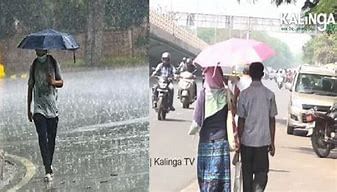
Why in News?
India is currently facing a severe heatwave, with temperatures reaching unprecedented levels, even in traditionally cooler areas like hill stations.
- Regions Affected The southern peninsular and southeastern coast regions, encompassing states like Maharashtra, West Bengal, Telangana, and Andhra Pradesh, have been significantly impacted.
- Definition of Heat Wave - Qualitatively, a heatwave occurs when air temperatures become dangerously high for human exposure. - Quantitatively, it is determined based on temperature thresholds in relation to normal temperatures or actual temperature levels.
- Criterions for Declaring Heat Wave - For plains, a heatwave is recognized when the maximum temperature reaches 40°C or higher, and for hilly regions, it's 30°C or above. - In coastal areas, a departure of 4.5°C or more from normal, with an actual maximum temperature of 37°C or higher, may signify a heatwave.
- Period and Prone Areas - Heatwaves predominantly occur from March to June in India, peaking in May. - Most affected regions include the northwest and central plains, East & North Peninsular India.
- Monitoring by IMD The India Meteorological Department tracks heatwaves using a network of observatories measuring various meteorological parameters like temperature, humidity, and wind speed.
- Effects on Human Body - Heat exhaustion occurs when the body sweats excessively to maintain a normal temperature. - Heat stroke, a more severe condition, arises when the body can't regulate its temperature, leading to organ dysfunction and potentially fatal consequences.
- Prevention and Mitigation To prevent heat stroke, individuals should cool down the body rapidly using cold water, cold drinks, and electrolytes. Avoiding direct sunlight and strenuous activity during peak heat hours is advisable.
Core Heatwave Zone (CHZ) in India
- Annual Heatwave Occurrence The Core Heatwave Zone, spanning central, north, and peninsular India, experiences heatwaves annually from March to June.
- Most Affected States States like Rajasthan, Punjab, Haryana, and others are traditionally heatwave-prone, but recent observations show an expansion of affected areas to regions like Karnataka, Kerala, and Sikkim.
Reasons Behind Intense Heat in April
- El Niño Effect - The year 2024 began in an El Niño state, characterized by abnormal warming in the equatorial Pacific Ocean, leading to extreme temperatures globally. - El Niño years typically experience prolonged heatwaves and reduced pre-monsoon rainfall.
- Anticyclone Systems - High-pressure anticyclone systems over southern India intensify heatwaves by pushing warm air downwards, preventing cooling sea breezes from reaching land. - This setup has contributed to the sweltering conditions experienced in various Indian states during April.
La Cumbre volcano
Subject: Geography
Source: MSN
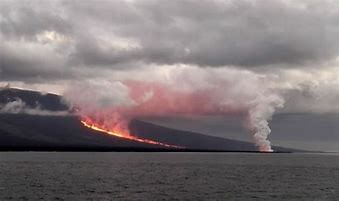
Why in News?
Recent lava spewing from La Cumbre volcano on Galápagos Islands destroying habitat of rare land iguanas.
About La Cumbre volcano:
- Located on Fernandina Island – the third largest island in the Galápagos Islands.
- Lies directly atop the mantle plume, or hot spot, that produced all of the Galápagos Island. It is located around 1,125 kilometres off mainland Ecuador and erupted for the first time since 2020.
- Has a large crater, or caldera, at its summit that harbors a permanent crater lake. This lake attracts a wide variety of animals including tens of thousands of Galápagos land iguanas (Conolophus subcristatus) that lay their eggs in nests within the caldera.
Key facts about Galápagos land iguana
- One of three species of land iguana endemic to the Galapagos Islands (the others being the Santa Fe land iguana and the Galapagos pink land iguana).
- A very large species of lizard in the family Iguanidae. It is primarily an herbivorous species.
- This large cold-blooded reptile has a mutualistic relationship with finches, which can often be seen sitting on their backs, picking ticks from between their scales.
- Active during the day spending their time foraging or basking on rocks; at night they sleep in burrows.
Conservation status
- IUCN: Vulnerable
Labour Day or May Day
Subject: Polity and Governance
Source: Indian Express

Why in News?
Politicians, celebrities, and members of civil society came together on Wednesday to celebrate Labour Day and recognize the contributions of workers.
Background
- May 1, also known as May Day, is celebrated to honor the working class and commemorate their struggles for fair wages and better working conditions.
- The International Labour Organization (ILO) emphasized the importance of renewing commitment to social justice on this day.
History and Significance of May Day
- The origins of May Day can be traced back to the late 19th century, particularly to the 1886 Haymarket Massacre in Chicago.
- In 1864, the First International, an umbrella body for socialists and communist organizations, was established.
- On May 4, 1886, the Haymarket Massacre in Chicago led to the celebration of May 1 as Workers' Day.
- The Second International declared May 1 as International Workers' Day in 1889.
- In India, Labour Day was first celebrated on May 1, 1923, in Chennai.
- The red flag, symbolic of the Left movement, was first used during the Chennai event.
Key Events
- Crop failure in the 1840s led to anti-feudal upheavals known as 'The Revolutions of 1848'.
- The Haymarket Massacre in Chicago in 1886 sparked the movement for better working conditions.
- The demand for an eight-hour workday led to massive strikes across the United States.
- The resolution passed in the Chennai event urged the British government to declare May 1 as a Labour Day.
GS-II
The Question of Article 31C
Subject: Polity and Governance
Source: Live Law
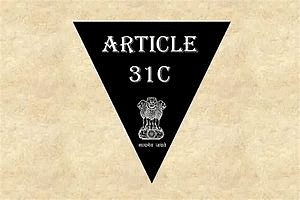
Why in News?
While hearing a case to decide whether the government can acquire and redistribute private property, a 9-judge Bench of the SC decided to take up another issue of “radical constitutional consequence”: does Article 31C still exist?
Article 31C in the Indian Constitution:
- Protects laws ensuring distribution of community resources for common good and preventing concentration of wealth to common detriment.
- Specifically shields directive principles from challenges under right to equality or rights under Article 19.
Introduction of Article 31C:
- Added by the Constitution (25th) Amendment Act 1971 after the Bank Nationalisation Case.
- Addressed difficulties in implementing Directive Principles of State Policy.
The Journey of Article 31C:
- Challenged in the Kesavananda Bharati case (1973) leading to limitations on its scope.
- Expanded protection under the Constitution (42nd) Amendment Act in 1976.
- Meant to prioritize directive principles over fundamental rights for socio-economic reforms.
- Ruled against in the Minerva Mills v. UoI case in 1980, questioning Parliament's amendment powers.
Ongoing Case in the Supreme Court:
- Concerns Chapter VIII-A of the Maharashtra Housing and Area Development Act, 1976.
- Questions revolve around the interpretation and applicability of Article 31C.
Arguments in the Supreme Court:
- Debate on the existence and implications of Article 31C post-Minerva Mills decision.
- Contentions regarding the revival or nullification of specific provisions based on past amendments and court ruling.
What are the Problems with the Street Vendors Act?
Subject: Polity and GovernanceSource: Indian Express
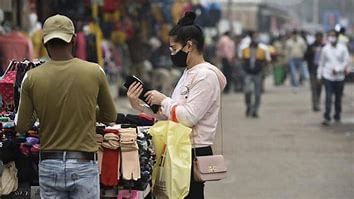
Why in News?
A decade has passed since the Street Vendors (Protection of Livelihood and Regulation of Street Vending) Act came into effect on May 1, 2014.
What is the Significance of Street Vendors in the Indian Society?
- Street vendors, estimated to constitute 2.5% of any city’s population, play multifaceted roles in city life.
- They (like the vegetable sellers, food vendors) are essential providers of daily services.
- They are also integral to Indian culture - imagine Mumbai without its vada pav or Chennai without its roadside dosai.
What are the Provisions of the Law?
- It recognises the positive urban role of vendors and the need for livelihood protection.
- It commits to accommodating all ‘existing’ vendors in vending zones and issuing vending certificates.
- The Act establishes a participatory governance structure through Town Vending Committees (TVCs) and establishes a Grievance Redressal Committee chaired by a civil judge or judicial magistrate.
What are the Challenges Faced in the Implementation of the Law?
- At the administrative level, there has been a noticeable increase in harassment and evictions of street vendors.
- At the governance level, the Act does not integrate well with the framework established by the 74th Constitutional Amendment Act for urban governance.
- At the societal level, the prevailing image of the world class city tends to be exclusionary, marginalising and stigmatising street vendors as obstacles to urban development.
What is the Way Forward?
- The implementation of the Act needs to be decentralised (from current top-down direction and management of the Ministry of Housing and Urban Affairs) over time to ensure effectiveness in addressing the diverse needs of street vendors nationwide.
- PM SVANidhi, a micro-credit facility for street vendors, has been a positive example in that direction. Enhance the capacities of ULBs to plan for street vending in cities with new challenges such as the impact of climate change on vendors.
GROUP OF SEVEN (G7)
Subject: International Relations
Source: Times of India

Why in News?
Energy ministers from the Group of Seven (G7) reached a deal to shut down their coal-fired power plants by 2035.
Background:
- The agreement on coal marks a significant step in the direction indicated last year by the COP28 United Nations climate summit to phase out fossil fuels, of which coal is the most polluting.
About G7 :
- The Group of Seven (G7) is an intergovernmental political and economic forum that brings together seven of the world’s advanced economies.
- These countries include Canada, France, Germany, Italy, Japan, the United Kingdom, and the United States.
- Additionally, the European Union (EU) is considered a “non-enumerated member” of the G7.
- The forum is organized around shared values of pluralism, liberal democracy, and representative government.
Key points :
- Origins: The G7 originated from an ad hoc gathering of finance ministers in 1973. Over time, it has evolved into a formal and high-profile venue for discussing and coordinating solutions to major global issues. These issues span areas such as trade, security, economics, and climate change.
- Annual Summit: Each member’s head of government or state, along with the EU’s Commission President and European Council President, meet annually at the G7 Summit. Throughout the year, other high-ranking officials from the G7 and the EU engage in discussions and initiatives.
- Russia’s Membership: Russia was a formal member of the G7 (as part of the G8) from 1997 until its expulsion in 2014 due to the annexation of Crimea. Since then, the G7 has continued without Russia’s participation.
- Rotating Presidency: The G7 operates without a legal or institutional basis. It is organized through a rotating presidency among the member states. The presiding state sets the group’s priorities and hosts the annual summit. For 2024, Italy holds the presidency.
GS-III
Red Colobus
Subject: EnvironmentSource: MSN

Why in News?
A recent study by an international team of scientists has highlighted the significance of conserving Red colobus for protecting tropical forests.
About Red Colobus
- Red colobus, a rare group of endangered monkeys found in Africa, serve as crucial indicators of biodiversity.
- They belong to the group of Colobines, which primarily feed on leaves, unlike cercopithecines that have an omnivorous diet including animals.
- Colobines encompass not only Africa's colobus monkeys but also the langurs found in south and southeast Asia.
- These monkeys are distributed from Senegal's forests to the Zanzibar Archipelago.
- Unfortunately, most red colobus species are on the brink of extinction, with over half of them classified as Endangered or Critically Endangered on the IUCN Red List.
Threats
- The red colobus face threats such as hunting for trade and local consumption as well as habitat loss due to various human activities like logging, mining, and agriculture expansion.
Initiative to Conserve Red Colobus
- The Red Colobus Conservation Action Plan, led by the IUCN Species Survival Commission Primate Specialist Group and the African Primatological Society, aims to prioritize the conservation of red colobus.
- The plan seeks to safeguard Africa's tropical forests and decrease unsustainable hunting for wild meat through the formation of the Red Colobus Working Group (RCWG) and the Red Colobus Conservation Network (RCCN).
Mpox
Subject: Science and Technology
Source: Medscape
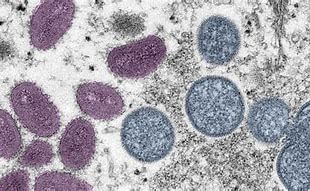
Why in News?
A recent study unveiled a new adaptation mechanism of the Mpox virus, enhancing its infectivity in humans during recent outbreaks.
- The virus was renamed from "monkeypox" to "mpox" to eliminate stigma towards monkeys and emphasize its direct human transmission.
Background
- Mpox was initially identified in laboratory monkeys in the 1950s, with the first human case documented in 1970 in the DRC.
- Historically, mpox outbreaks have been limited and traceable to individuals who recently visited regions where the virus is prevalent, such as west and central Africa.
About Mpox
- Mpox, also known as monkeypox, is a DNA virus belonging to the Poxviridae family, which comprises large, double-stranded DNA viruses.
- Transmission to humans primarily occurs through direct contact with infected animals like rodents and primates or contaminated objects.
- Infection in humans typically manifests as fever, headache, muscle aches, and a distinctive rash evolving from macules to papules to vesicles and pustules.
- Although a vaccine exists, its accessibility and efficacy are limited, underscoring the necessity for enhanced prevention and control strategies.
Global Impact
- A widespread outbreak in 2022-2023 affected over 100,000 individuals across 118 countries, drawing global attention to mpox.
- The outbreak was characterized by significant human-to-human transmission, particularly through close contact and the sexual route.
- The World Health Organization (WHO) declared the outbreak a public health emergency, prompting coordinated containment efforts.
Genomic Features
- Mpox genomes are categorized into clades I and II, with clade I exhibiting higher mortality rates.
- The 2022 outbreak involved a novel lineage, clade IIb, better suited for human-to-human transmission.
- Research indicated a distinct clade I lineage associated with human-to-human transmission, suggesting recent zoonotic spillover.
- Mpox viruses can undergo genomic alterations like gene duplication or deletion to adapt to various hosts and environments.
- A study published in Nature Communications decoded the genome from the 2022 outbreak, pinpointing genomic sections crucial for human-to-human transmission, serving as the virus's genomic adaptability mechanisms.
Push for Balanced Fertilization
Subject: Economics
Source: Indian Express

Why in News?
The fiscal year ending March 2024 witnessed a significant surge in urea consumption, reaching 35.8 million tonnes, a 16.9% increase from 2013-14.
Importance of Balanced Fertilization
- Balanced fertilization emphasizes the proper distribution of primary, secondary, and micronutrients based on soil type and crop requirements at different growth stages.
- For instance, providing nitrogen, phosphorus, and potassium alongside secondary elements like sulphur, calcium, and magnesium, as well as micronutrients such as iron, zinc, copper, manganese, boron, and molybdenum in appropriate proportions.
Impact of Neem-Coated Urea
- The introduction of neem-coated urea aimed to prevent the misuse of subsidized urea for non-agricultural purposes. Additionally, it acted as a nitrification inhibitor, enhancing nitrogen release gradually.
- This innovation led to improved nitrogen utilization efficiency, reducing the number of urea bags required per acre.
Nutrient-Based Subsidy System
- Objective and Implementation
- The Nutrient-Based Subsidy (NBS) system, initiated in April 2010, aimed to encourage balanced fertilization by associating subsidies with nutrient content in fertilizers.
- This system initially led to a shift towards complex fertilizers with balanced nutrient proportions. However, the exclusion of urea from subsidy coverage hindered its effectiveness.
- Challenges and Failures
- Challenges in promoting balanced fertilization include the recent imposition of price controls on non-urea fertilizers, leading to nutrient imbalances.
- The pricing dynamics have favored urea and DAP, potentially encouraging over-application by farmers.
Opportunities and Conclusion
- Import Dependency and Price Trends
- India's heavy reliance on imported fertilizers poses challenges due to fluctuating global prices, impacting foreign exchange reserves and government subsidies.
- Recent reductions in international fertilizer prices provide an opportunity for the government to rationalize domestic prices and promote balanced plant nutrition.
- Government Initiatives
- The introduction of sulphur-coated urea at a revised price indicates a push towards balanced fertilization practices, potentially leading to further innovations in this direction.
- Expectations of more initiatives focusing on balanced fertilization strategies in the near future.
|
38 videos|5288 docs|1117 tests
|
















